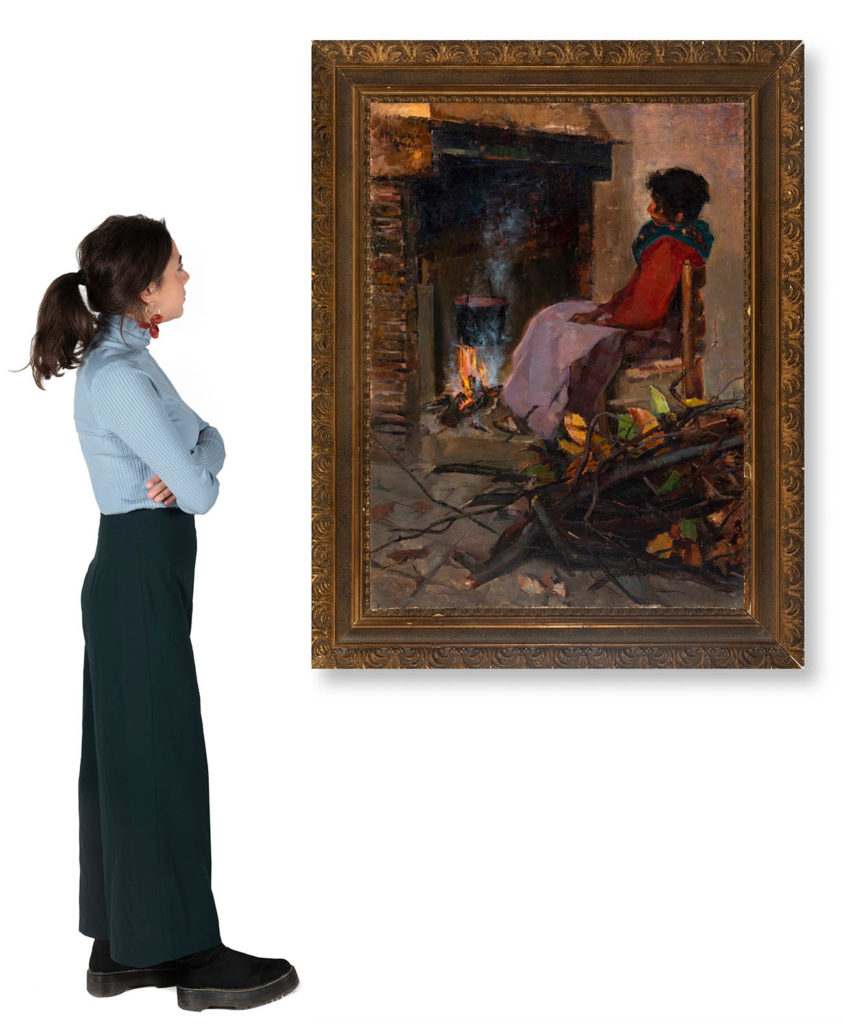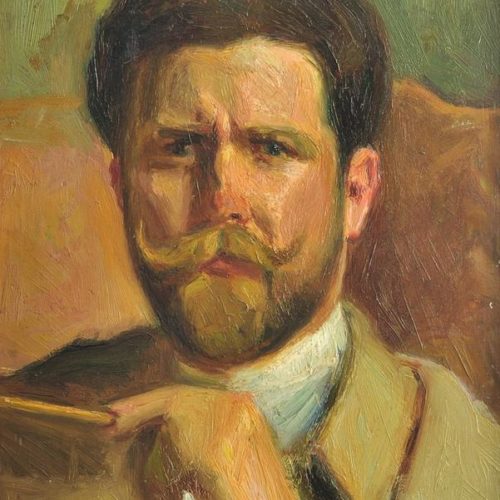Nicolás Massieu, “a woman by the fire”.
A woman rests by the hearth, in which a soup pot hangs. A bundle of dry branches, ready to burn, are heaped on the ground. Nicolás Massieu captures with great sensitivity this peaceful, magical moment of meditation.
He subtly introduces us to the rustic room, where the young peasant woman remains lost in thought, oblivious to our intrusion. We only agree to see her profile skewed, veiled by black hair that falls in unruly locks over her semi-closed eyelids.
Massieu, with skillful brushwork and descriptive audacity, makes us feel the cozy atmosphere, the pleasant warmth on the feet, which, clad in slippers, rest a few centimeters from the fire, on the stone plinth.
The Canarian painter made this painting during his stay in Rome, where he traveled in 1902 to further his art studies. At this early time he was steeped in impressionism, a language he would never completely abandon despite his subsequent foray into avant-garde experiences.
On his return to the islands, after he traveled to the capitals of European art (Rome, Paris), the painter would execute a highly modern production, while remaining vernacular, which would earn him the title of “renovator of the island’s artistic scene of the twentieth century”.
NICOLÁS MASSIEU Y MATOS (Santa Brígida, Gran Canaria, 1876 – 1954). An outstanding painter of Canarian origin, Nicolas Massieu received the first painting lessons in Las Palmas at the San Agustín school and at the Academy of Drawing, at the hands of his uncle Nicolás Massieu y Falcón. In 1902 he left for Italy, where he came into contact with classical art and the Renaissance masters, on a trip that lasted until 1904. He decided to expand his art studies abroad, specifically in France, alongside famous masters such as Jean Paul Laurenz and Carrière. He returned to the Canary Islands in 1914, after spending several years in Argentina, where he obtained repeated triumphs. In his native island he definitively established his residence. From that moment on he dedicated himself to painting Canarian landscapes, especially of his native island, of which he portrayed “every corner” with great personal expressiveness. He also taught drawing classes at the Instituto de Segunda Enseñanza. In 1933 he made his first anthology of landscapes, and in 1945 he participated in a collective of painters from the province of Las Palmas in Madrid, together with César Manrique, Felo Monzón and Jorge Oramas. A year later he presented his still lifes in the Literary Cabinet, then he did so in the Círculo de Bellas Artes de Tenerife. In 1952 his last retrospective took place. Throughout his career as an artist, Massieu received the most varied accolades from both peninsular and island critics. In 2019 the Cristino Vera Foundation of Tenerife held an important exhibition with unpublished works by the painter. The president of the Cristino de Vera Foundation, Alberto Delgado, praised the figure of the Gran Canaria painter for his representation of the Canaries around the world and for bringing impressionism and postmodernism to the islands.




